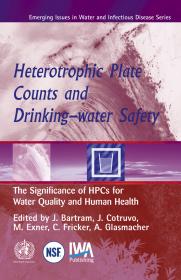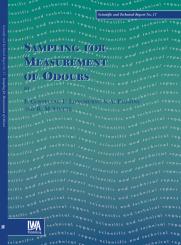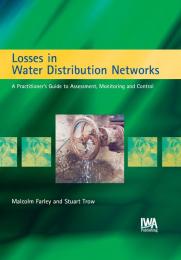 Heterotrophic Plate Counts and Drinking-water Safety
Heterotrophic Plate Counts and Drinking-water Safety
Heterotrophic Plate Counts and Drinking-water Safety provides a critical assessment of the role of the Heterotrophic Plate Count (HPC) measurement in drinking water quality management. It was...
 Prefiltration/Clarification via Dynamic Particle Separation
Prefiltration/Clarification via Dynamic Particle Separation
The project seeks to develop a non-fouling medialess inertial particle separator for use in industrial wastewater applications. The device, capable of removing fine particles from a fluid...
 A Novel Membrane Process for Autotrophic Denitrification
A Novel Membrane Process for Autotrophic Denitrification
Biological denitrification by heterotrophic bacteria is common in the wastewater industry in the U.S. and in drinking water processing in Europe. To facilitate heterotrophic...
 Sampling for Measurement of Odours
Sampling for Measurement of Odours
Research into the sampling and measurement of odours has developed in a number of sectors, especially the agriculture, food and process industries, with knowledge from each sector being...
 Impact of Surface Storage on Reclaimed Water: Seasonal and Long Term
Impact of Surface Storage on Reclaimed Water: Seasonal and Long Term
The objectives of this project were to develop (1) a better understanding of the effects of storage on reclaimed water quality, (2) a methodology to help understand/predict water quality...
 Losses in Water Distribution Networks
Losses in Water Distribution Networks
This is a best practice manual for addressing water losses in water distribution networks worldwide. Systems and methodologies are presented for improving water loss and leakage management in a...
 Enhancing Biodegradability of Refractory Aromatics in Wastewater
Enhancing Biodegradability of Refractory Aromatics in Wastewater
Chlorinated aromatics, nitroaromatics, and azoaromatics are widely used in industry. As a result, these compounds are commonly present in industrial wastewater. Aerobic biological treatment...
 Research Priorities for Successful Asset Management
Research Priorities for Successful Asset Management
WERF convened a workshop on March 21-22, 2002, for the purpose of characterizing the spectrum of asset management...
 Evaluating Endocrine Disruption in Receiving Waters
Evaluating Endocrine Disruption in Receiving Waters
In recent years, concerns have been raised that low concentrations of chemicals may alter the normal functions of the endocrine system, resulting in potentially significant adverse effects on...
 Application and Optimization of the Galvano-Coagulator Process To Heavy Metal Waste Streams
Application and Optimization of the Galvano-Coagulator Process To Heavy Metal Waste Streams
The galvano-coagulator is a technology developed in the former Soviet Union in the 1980s. The major feature of the technology is that it appears to be an effective process in hexavalent chromium...